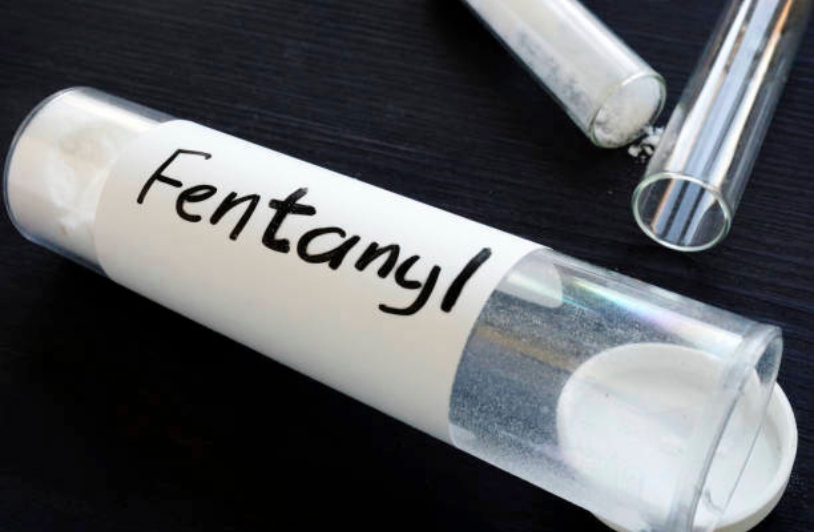Donald Trump threw renewed turmoil into trade talks by announcing new tariffs for Mexico and the European Union. Trump told both Mexico and Canada, which received similar news last week, that the two countries specifically were not doing enough to curb the flow of fentanyl into the United States.
At the same time, of course, Trump is taking credit for stopping all illegal traffic of migrants and goods on both borders.
In addition to drugs, Trump has said that other Mexican policies contributed to “unsustainable” trade deficits and has cited specific Canadian tariffs on American dairy exports as problematic. “The Trade Deficit is a major threat to our Economy and, indeed, our National Security!” Trump wrote in letters to both — as well as to the EU.
Mexico and Canada remain the largest trade partners with the U.S and since March, Trump has vacillated about how high to set tariffs and on what products. We still have the United States-Mexico-Canada Agreement, the trade pact thatTrump re-negotiated and signed during his first term.
Still, Trump’s remarks would seem to suggest that both countries were derelict in not making all drug traffic disappear since he became president again in January.
So it seems useful to ask where we stand with drug smuggling, particularly for fentanyl, a potent synthetic opioid, significantly stronger than heroin and morphine that even a tiny amount can prove lethal. It is often mixed with other drugs or pressed into counterfeit pills, making it incredibly dangerous, as many users may be unaware, they are consuming fentanyl-laced substances.
Trump holds China responsible for supplying the bulk of fentanyl raw substances for processing to other countries, including Mexico.
Smuggled Fentanyl
Generally, the story is that fentanyl seizures have significantly increased in recent years both in number and in weight or amount.
The U.S. Customs and Border Patrol records seizures at the border, which this year are down a reported 54% over 2024, a sign of more control, though the 2024 numbers were higher than previous years.
The Drug Enforcement Administration (DEA), which has not updated its own numbers, uses those 2024 seizure numbers as amounting to more than 60 million fentanyl-laced fake pills and nearly 8,000 pounds of fentanyl powder — the equivalent of 380 million doses. Between January and May, those numbers were 3,879 pounds of fentanyl seized, or 54% less than the amount during the same period in 2024. That makes sense since Trump has sent more border patrol personnel and active-duty troops to the southern border.
It is estimated that more than 85% of those fentanyl seizures were at official ports of entry, such as land border crossings, airports, and seaports, true so far this year as well. These are areas manned 24/7 with trained law enforcement personnel. While the Southwest border remains the primary route, a small percentage of fentanyl is also seized at the Northern border with Canada and at maritime borders.
Canadians have expressed surprise at being held responsible in trade talks for a tiny amount of the drug smuggling problem, and Mexico has made clear that it has expanded and strengthened its anti-cartel efforts. It raises the obvious question: If this is progress at reducing fentanyl smuggling, what is the basis for Trump’s tariff punishment based exactly on this point? What numbers is he getting that we are not?
As with so many programs, the Trump administration talks big and insists that law enforcement is the answer to every question
Where’s Trump on Demand?
Of course, there is a second question here: What is Trump doing about fentanyl? Where is the U.S. anti-fentanyl campaign to discourage, limit or treat American hunger or addictions for the drug?
Over the last few years, the U.S. response to rising overdose deaths involving fentanyl has been to launch various health awareness campaigns, including distributing the drug naloxone or Narcan as an antidote and training emergency workers in its use in fentanyl cases.
But as part of widespread health budget cuts, Trump in May proposed eliminating $69 million for the distribution of those antidotes and the associated training programs.
Further, anti-fentanyl efforts organized by the Centers for Disease Control and Prevention have been canceled or left without staff in the efficiency campaign coordinated by Trump, Elon Musk and Secretary of Health and Human Services Robert F. Kennedy Jr. Those had included programs to raise awareness of the dangers of fentanyl and federal employees whose focus had been on substance abuse programs.
There are local and regional programs that have sought to pick up the slack, particularly in Maryland, New York and Oregon, but still, there is a lot more talk about Jeffrey Epstein’s alleged client list than there is public warning about fentanyl usage.
“We are incredibly concerned about the elimination of CDC’s Injury Center, including the Opioid Overdose Prevention and Surveillance program. This program is one of few federal resources that flow directly to local communities to address overdose, which is the leading cause of death for Americans ages 18-44 and one of the leading causes for Americans 45 and older. said Big Cities Health.org. ” These programs are working as CDC recently reported a 7 percent decline in overdoses from February 2023 to 2024,”
In May, a coalition of addiction experts, more than 300 physicians, harm reduction workers and researchers signed a letter delivered to Congress warning of “dire consequences” if the U.S. cuts funding for programs that help communities battle the drug overdose epidemic.
Drug Policy.org said that by lashing Medicaid and public health grant programs, Trump’s cuts will directly hinder access to treatment, naloxone, and vital health services. The results could be devastating: more lives lost to overdose, increased suffering, and addiction spiraling out of control.”
“FREEDOM OF THE PRESS IS NOT JUST IMPORTANT TO DEMOCRACY, IT IS DEMOCRACY.” – Walter Cronkite. CLICK HERE to donate in support of our free and independent voice.




